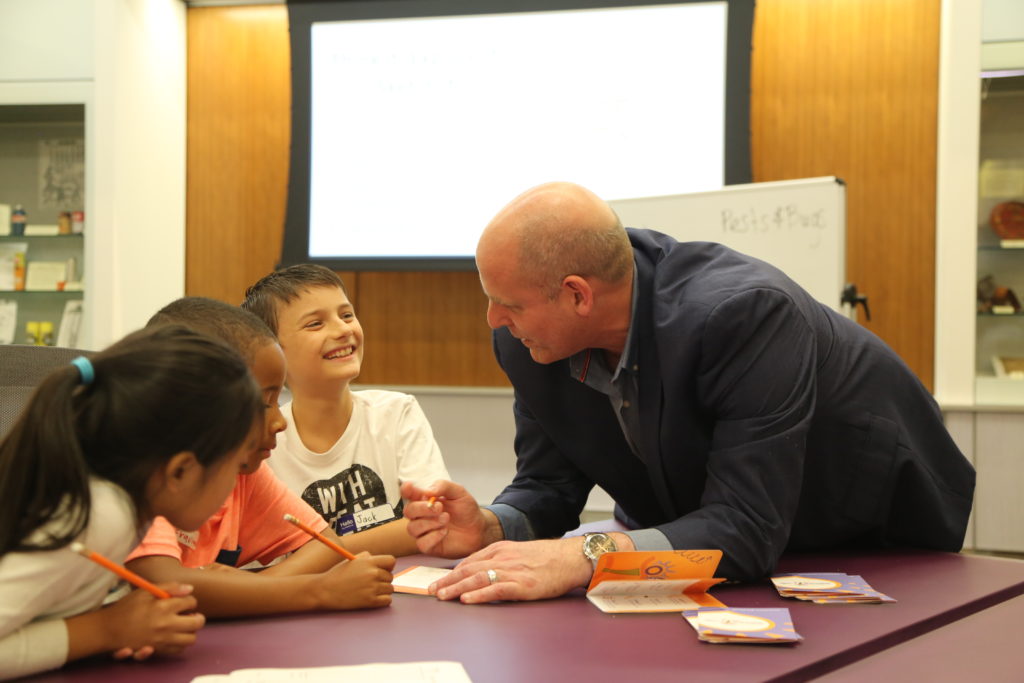Hello, Inventors!
Challenge Community

Think of a time when you had an idea for how to make something better. Did you sketch or build your solutions? Did you share your ideas with classmates, friends, or family? If so, then, congratulations, you’ve already demonstrated your inventive powers.
Our team here at the Smithsonian’s Lemelson Center for the Study of Invention and Innovation believes everyone is inventive. (Yes, that means you.) Every day in Spark!Lab, we invite visitors to practice and play with the invention process:
By the way, like most creative endeavors, being inventive sometimes means looping back to previous steps or skipping around out of order. That’s part of what makes the process fun and unpredictable.
Each year, Spark!Lab’s Dr. InBae Yoon Invent It Challenge invites young inventors like you to take on a timely challenge, come up with an idea for a solution, execute (and document!) the invention process, and submit a polished package for the judges. Yes, there’s judging – which means you could actually win fabulous prizes while making the world a better place.
This year’s challenge:
Create an invention that enhances the daily lives and activities of older adults.
According to the American Psychological Association, one out of every four 65-year-olds today will live past age 90, and one out of 10 will live past age 95. By 2060, for the first time in US history, older adults will outnumber children under 5 years old.
Coming up with a winning invention starts with understanding and empathizing with your end user. So, you might begin the process by thinking about or observing older members of your family or community. What kinds of activities have become difficult or challenging for them? As you may have noticed, physical tasks can sometimes require more effort for older adults. Maybe you’ll decide to invent something to improve mobility or balance – or a safe way for older adults to continue exercising into their later years. Maybe you’ll come up with an invention to help older adults stay engaged despite vision or hearing loss. Maybe you’ll invent a new way for older adults to clean, shop, or get around town.
“Ok, count me in! What’s next?”
Great, we’re glad your creative wheels are already turning. To keep the momentum going, check out this Student Resource page where you’ll find:
- More information about this year’s challenge
- More details about the invention process
- Links to an online community of inventors
- Submission Template
- Links to previous years’ winning entries
You’ll also find this incredibly helpful Student Guide that includes:
- A downloadable inventor’s notebook to keep your process on track and help you document your progress
- Research and background about this year’s challenge, including expert advice and research findings from the National Council on Aging, National Institutes for Health, the CDC, and other trusted sources
- Invent It Challenge Scoring Guide, which will tell you what the judges will be looking for
- Submission Checklist
- Permission Form
“Can I really be an inventor?”
The Dr. InBae Yoon Invent It Challenge is for you if:
- You already think of yourself as an inventor
- You may not call yourself an inventor but you want to solve a problem or address a challenge
- You like to come up with ideas
- You’ve imagined what the future might be like
- You know an older adult
- You’re curious about anything you’ve read here
- You’re already coming up with your own idea for something we could add to this list of bullets
So, short answer: Yes, you are already inventive and, yes, you can be an inventor.
A few words of advice:
This may sound strange, but don’t trust your instincts… Instead, test them! Inventing is an iterative (non-linear) process that involves constant testing, tweaking, and adjusting. Once you have an idea, put it through the fire (no, not real fire – figurative fire) early and often so you can maximize time for tweaks. Remember, your submission is due April 5, 2019, and you’ll need to show the judges each step of the invention process. So, try not to overthink the early steps. Make your idea real as soon as you can and start getting feedback from others. If some features of your invention aren’t working, don’t get frustrated. That’s progress! Make some changes and try again. That’s what being an inventor is all about.
Have fun. We can’t wait to see what you’ll invent!
Sharon Klotz
Head of Invention Education
Lemelson Center for the Study of Invention and Innovation
Smithsonian Institution

0 thoughts on “Hello, Inventors!”
A wonderful project made with lots of dedication and hard work that got unnoticed. Better Luck Next time….. Keep going.
Great Job Lexi!